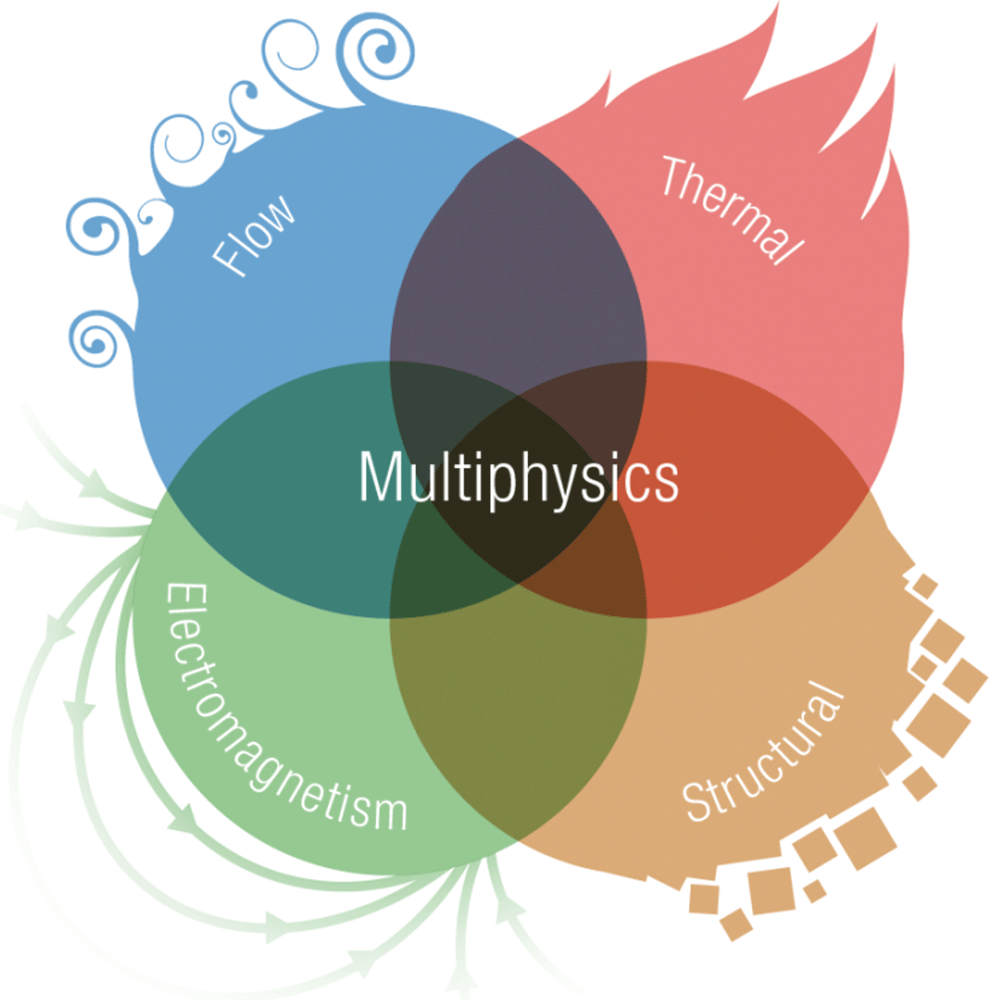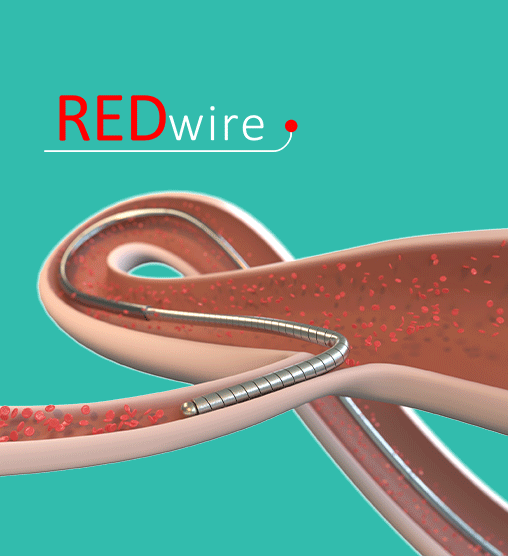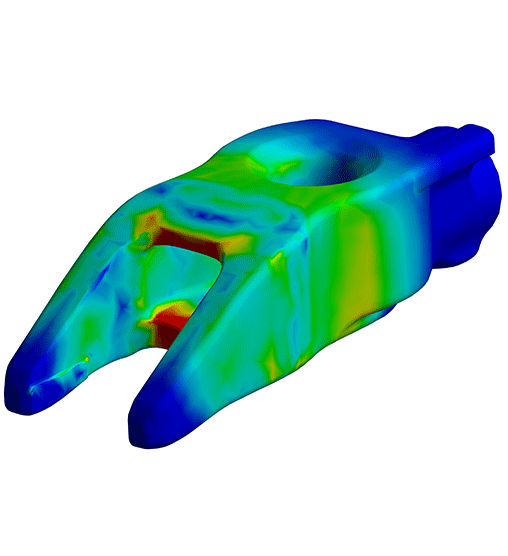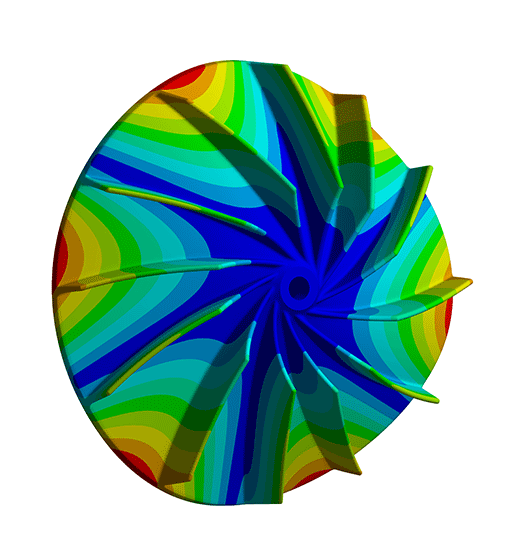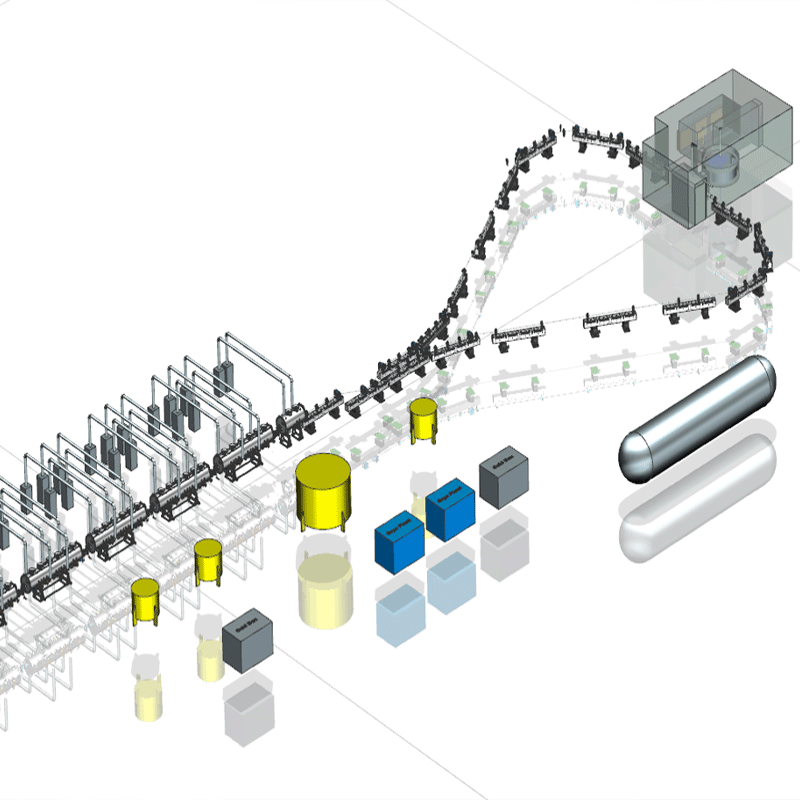Structural mechanics
stress reduction in a door lock.
We protect our valuables and privacy by locking our doors. A door should not be able to be forced open, so it should be able to withstand a large amount of force. Therefore, we have performed an analysis on the locks that are produced by BKS in Germany, containing parts from Demcon metal injection moulding (MIM). The lock required an improvement to make the BKS locks stronger. We used mechanical FEM analysis to determine the stresses within the lock and propose improvements for a new design.
In this showcase we show calculations for two load cases. We proposed design improvements, by which the stresses within the lock was significantly reduced to make sure that the stresses remain under the brittle failure limit. With the use of mechanical FEM analysis, we showed which parts of the lock are critical when it comes to fracturing. Improvements were proposed, which were validated using simulations.
simulations
our approach.
The first mechanical simulation showed that the forces on the connection of the shaft (red arrow) to the locking mechanism are too large. It is expected that this is the reason for the brittle failure. A second simulation, with the force from the side (blue arrow), showed that the forces on the middle rib of the shaft also experience large forces. This excess stress is mainly located at the fillet. When we learned where the fractures are coming from, we proposed improvements for the design of the lock. For the connection point between shaft and locking mechanism we proposed to make the reshape the part and thicken it. In this way the stresses are more equally distributed. The case of the rib on the shaft has the same problem and therefore a similar solution. The rounding appeared to be too small, so the radius should be increased. Increasing the radius lowers the stresses in the fillet below the brittle fracture limit. The customer performed tests on the improved lock, which confirmed that the new geometry could handle the specified load cases without breaking including a large safety margin. This confirms what was shown by simulation.
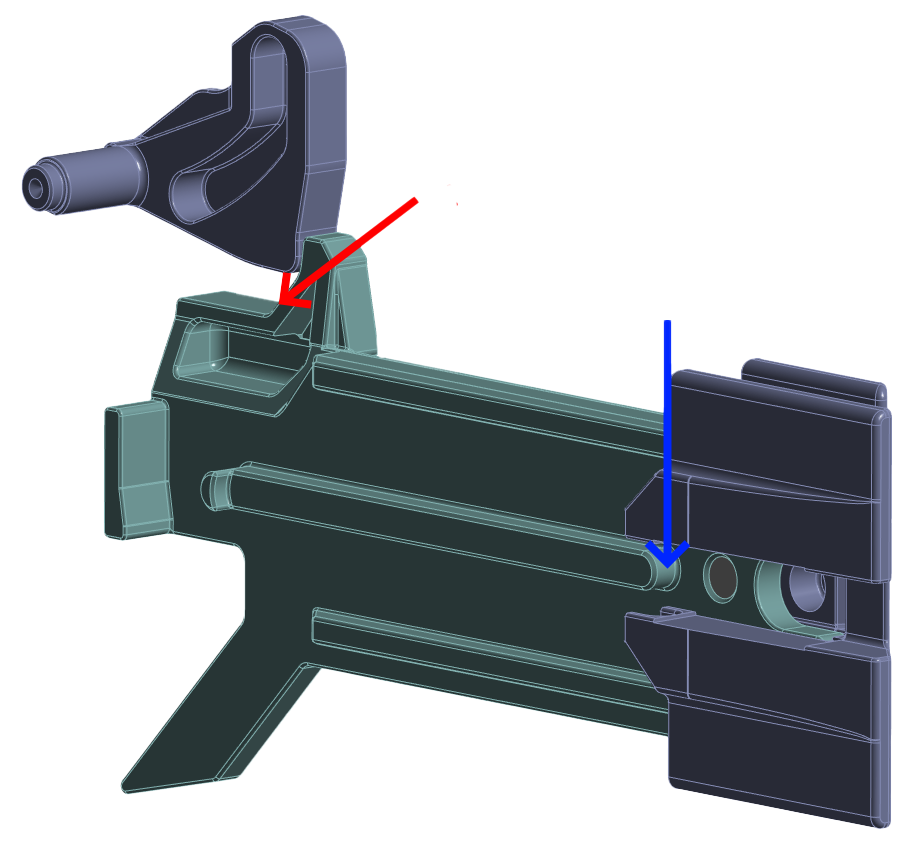

As a Multiphysics engineer you encounter practical problems. We encounter doors every day and we trust that they do not easily break. With FEM we have a tool that can pinpoint us the weakest link in the chain. In this way our design process is sped up.
Demcon multiphysics.
Demcon multiphysics is an engineering agency with high-end expertise in the area of heat transfer, fluid dynamics, structural mechanics, acoustics, electromagnetism and nuclear physics. We support clients from a wide variety of market sectors and help them achieve their goals in research and development with deep physical insights.
We combine fundamental physical knowledge from an analytical approach with Computer Aided Engineering (CAE) simulations tools from ANSYS, MATHWORKS, COMSOL, STAR-CCM+ and FLUKA to setup, execute, analyze and evaluate numerical simulations. The use of Computational Fluid Dynamics (CFD), Finite Element Analysis (FEM / FEA), Lumped Element Modelling (LEM), Computational Electromagnetics (CEM) and Monte Carlo simulations enables us to make a virtual prototype of your design. With these techniques we can simulate the fluid and gas flows, energy exchange, heat and mass transfer, stresses, strains and vibrations in structures and the interaction of electromagnetic fields with other physical aspects like heat generation. Simulation-driven product development increases the development efficiency and reduces the product development time. Our services can therefore fully support you in the designing phase, from idea up to prototype, from prototype to final design.
